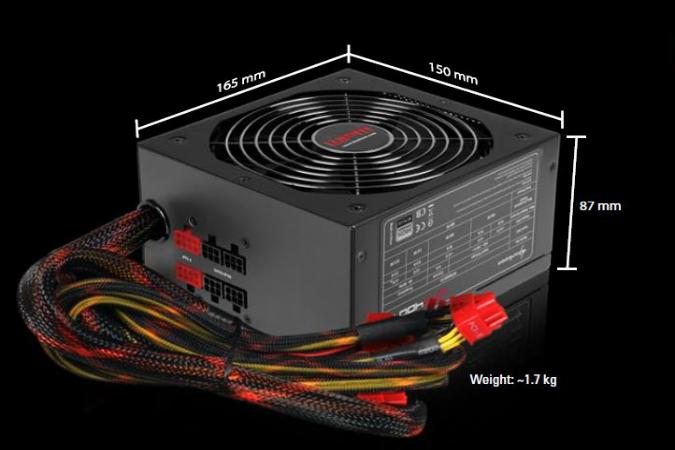
No no, it’s not the next “it’s so bad, it’s good” Syfy movie about a shark crossed with a harpoon. Sharkoon makes PC parts. We promise.
Anyway, so you want to build a brand new PC, or upgrade an existing one, but you’re low on the green. We’ve been there, and we feel your pain. If this sounds like you, you’re in luck though, because Sharkoon has revealed a new lineup of power supplies. And don’t worry: if the starting price for the WPM V2 is any indication, you’re probably not gonna need a bigger wallet to get your hands on one.
Dubbed the WPM V2, Sharkoon’s newest line of power supplies come in three varieties: the entry-level unit can handle up to 400 watts of gear, the mid-range is a 500-watter, while the top-end WPM V2 offers 700 watts of juice. Wearing an 80-PLUS energy efficiency certification label, Sharkoon’s WPM V2 power supplies are all cooled by a single, top-mounted 140mm fan. Each unit also includes a pair of PCI-Express cables with 6+2 pin connectors, a pair of SATA cables, a cable with a trio of four-pin connectors, and another cable with a pair of four-pin connectors. The WPM V2 series measures 6.5 x 5.9 x 3.4 inches.
Sharkoon claims that the WPM V2’s 140mm fan spins at a lower speed, and therefore doesn’t generate much volume. However, it’s unclear how many RPMs the fans on Sharkoon’s latest PSUs make.
Pricing information isn’t available for all three units, but the 400 watt WPM V2 can be had for roughly 39.99 in Euros (Sharkoon is a German company). That equates to $54.81 as of the writing of this article. If you do some searching around, you may find better deals on PSUs at slickdeals.net or other sites, but if you’re a Sharkoon devotee, $55 isn’t the highest price we’ve seen for a 400-watt PSU.
Editors' Recommendations
- The best cooler for the 7800X3D isn’t as powerful as you’d think
- AMD’s FSR 3 compromise just isn’t working
- This essential GPU feature isn’t as simple as you think
- Why the Nvidia RTX 4060 Ti simply isn’t enough for 2023
- Nvidia isn’t selling graphics cards — it’s selling DLSS


